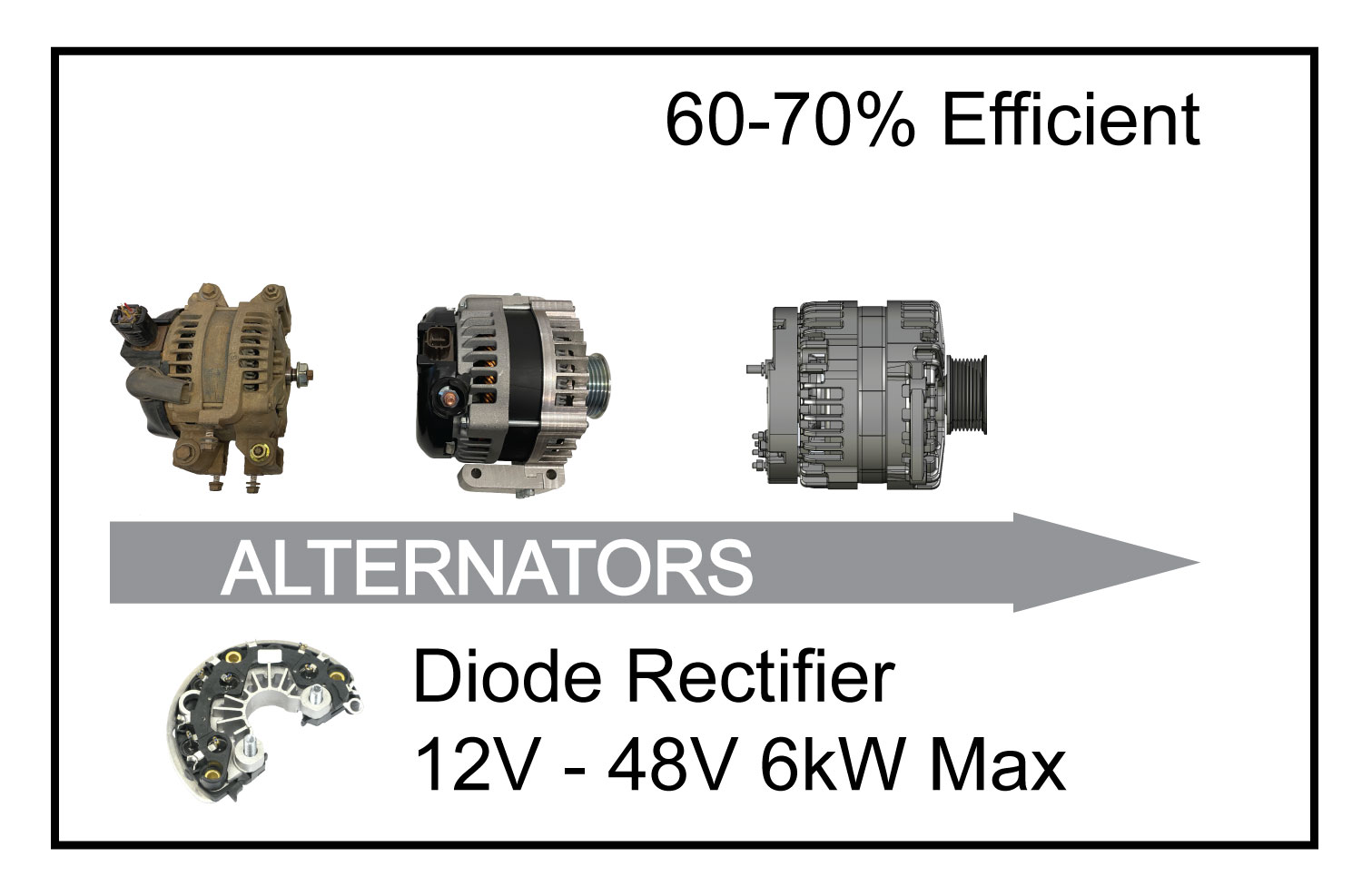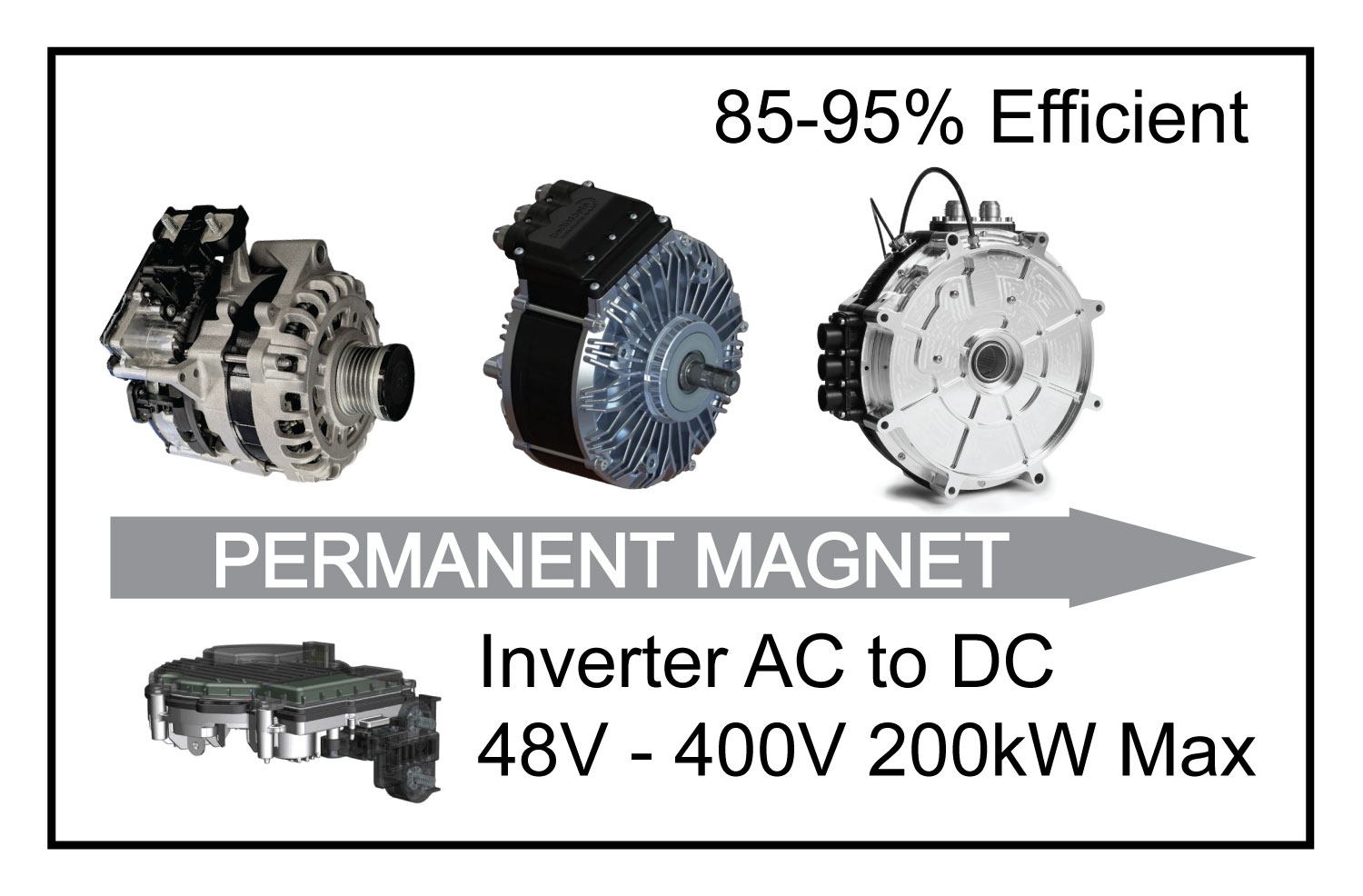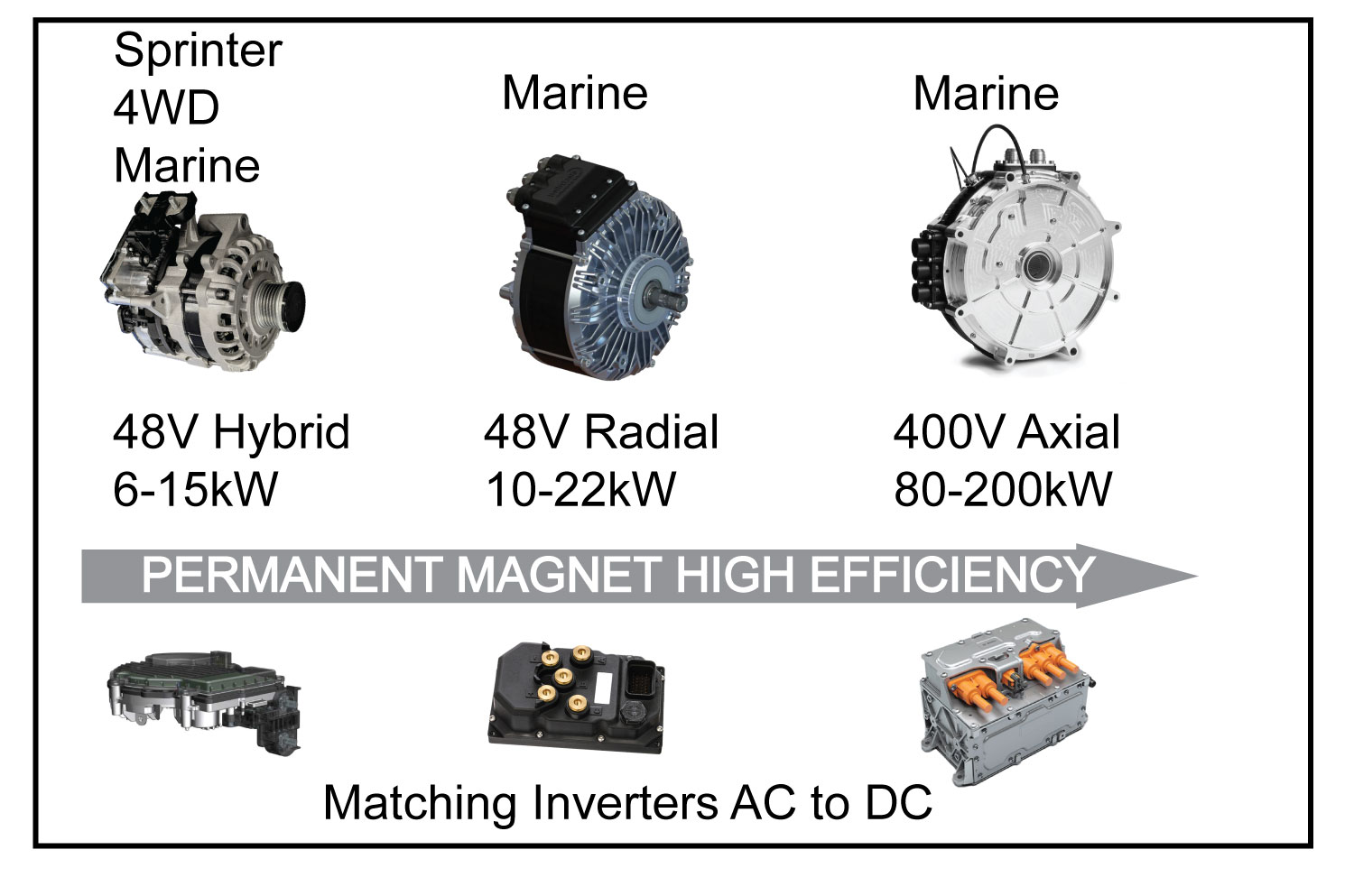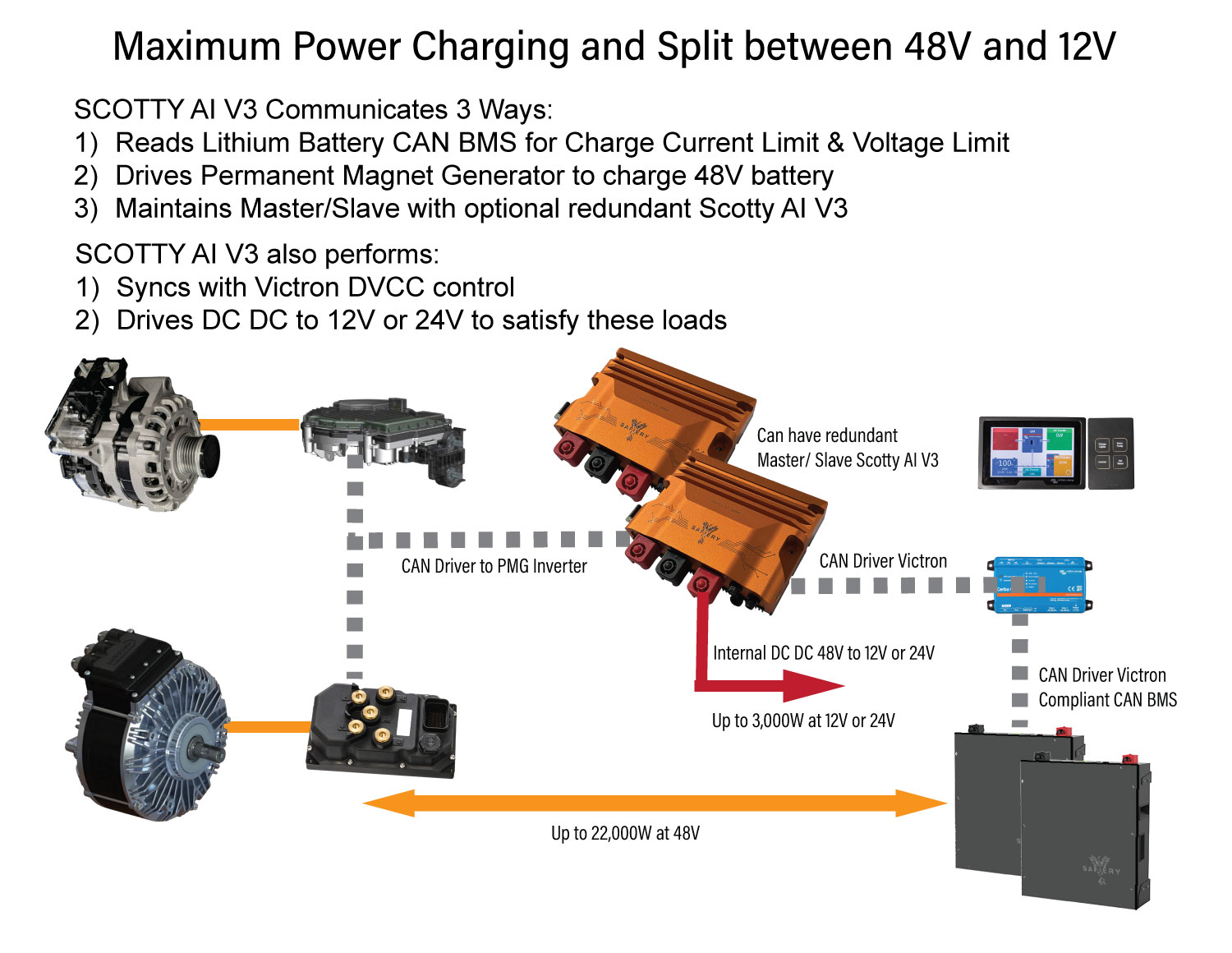No products were found matching your selection.
Rotor Wound Alternators:
- 1960's technology with rotor windings.
- These windings are excited by a field current, either internal or remotely controlled.
- The resulting efficiency of 60-70% decreases significantly when alternator is hot.
- Diodes are used as a simple but crude AC to DC conversion.
- Low power output rarely above 6kW because of the increasing losses and low efficiency as the field current increases.
- Load dumps are possible especially with remote field excitation.
- Can be brushed or brushless design.
Permanent Magnet Generators:
- Have permanent magnets instead of rotor windings.
- This eliminates rotor excitation losses of about 30%. There is NO field current.
- The resulting efficiency of 85-95% results in high power density and small size with the highest efficiency at all speeds,
- Inverter technology replaces diodes with higher efficiency AC to DC conversion.
- Load dumps are totally avoided with fast acting inverter.
- This technology has advanced and costs lowered with advent of electric vehicles.
Permanent Magnet for 4WD, RV, Sprinter:
To achieve compact size:
- Hybrid Excitation uses both permanent magnets and high density hairpin stator windings.
- Diodes are NOT used but inverter technology
- This results in 85% efficiency.
- Load dumps are NOT possible because of the fast acting inverter instead of diodes.
- Brushless design.
- Inverter technology allows active control of power output based on engine RPM.
- Reduces power at idle to prevent engine drag and increases it gradually during higher loads for smoother transitions.
- Dynamically throttles the alternator load/output to not affect engine response dynamics.
- Due to the regulator’s ability to quickly adjust its load thousands of times per second, it is able to greatly reduce the negative effects of drivetrain shocks. These shocks are the pulses of acceleration and deceleration throughout the engine combustion cycle, which typically result in premature belt-wear and other NVH issues seen previously with remote regulators.
- Drivetrain shock issues are typically evidenced by:
- Excessive movement of the belt called “belt slap”
- Audible noise such as clicking and squealing of the belt.
- Belt “dusting” around the alternator’s pulley due to excessive wear
Permanent Magnet for Marine:
High IP rating of 6K9K is required:
- Higher Efficiency: Interior Permanent Magnet (IPM) motor, known for superior efficiency compared to traditional alternators. This results in 50% more effective energy conversion than a traditional alternator.
- Compact and Lightweight Design: Weighing approximately 18 kg and measuring 208 mm in diameter with a length of 172.8 mm, the PMG is designed for high power density. This compactness facilitates easier integration into various systems, especially where space and weight are critical factors.
- Higher Power Output: While a traditional alternator may be limited to 6 kW, the SCOTTY AI V3 PMG can deliver a peak power of up to 32 kW and a rated power of 10 kW, providing greater capacity for energy regeneration.
- Durability and Environmental Resistance: The SCOTTY AI V3 PMG is fully certified to IP69K standards, ensuring it can withstand high-pressure and high-temperature washdowns. This makes it suitable for harsh operating environments where traditional alternators might be susceptible to damage.
Scotty AI V3 balances power demand:
- Drives DC DC for 12V or 24V loads as highest priority.
- Receives CAN BMS Charge Voltage limit, Charge Current Limit and warnings/ alert messages. Generally sits on Victron VE.CAN bus.
- Sends executing commands to Permanent Magnet OR Hybrid Synchronous Alternator for maximum 48V charging as specified by the 48V battery BMS.
- If optional Master/Slave redundant Scotty AI is installed, maintains sync with slave to drive up to double power to 12V or 24V loads or can be both with 2 units.





